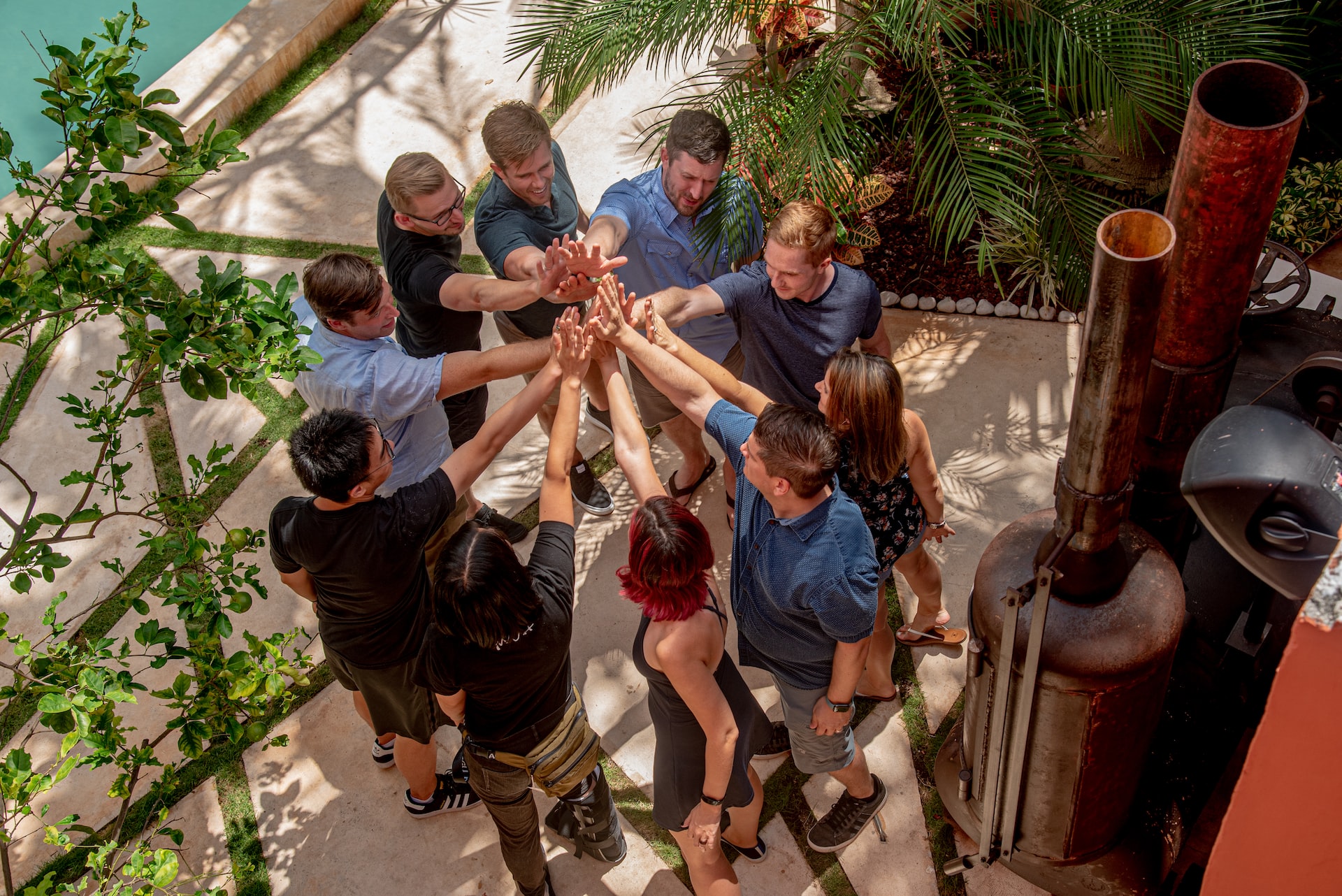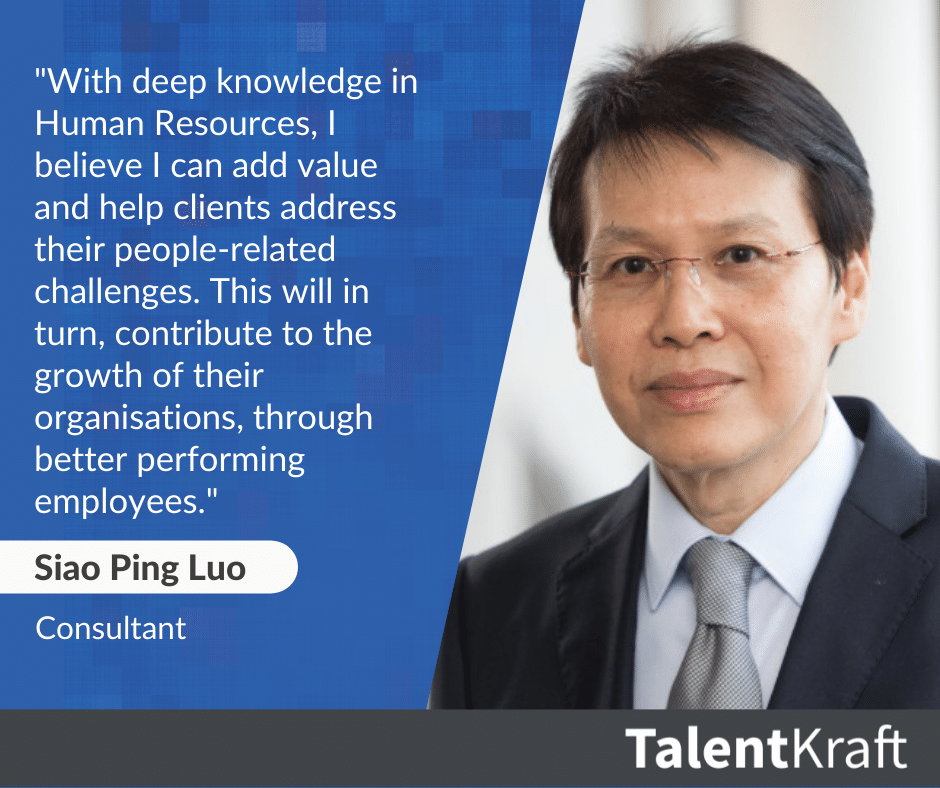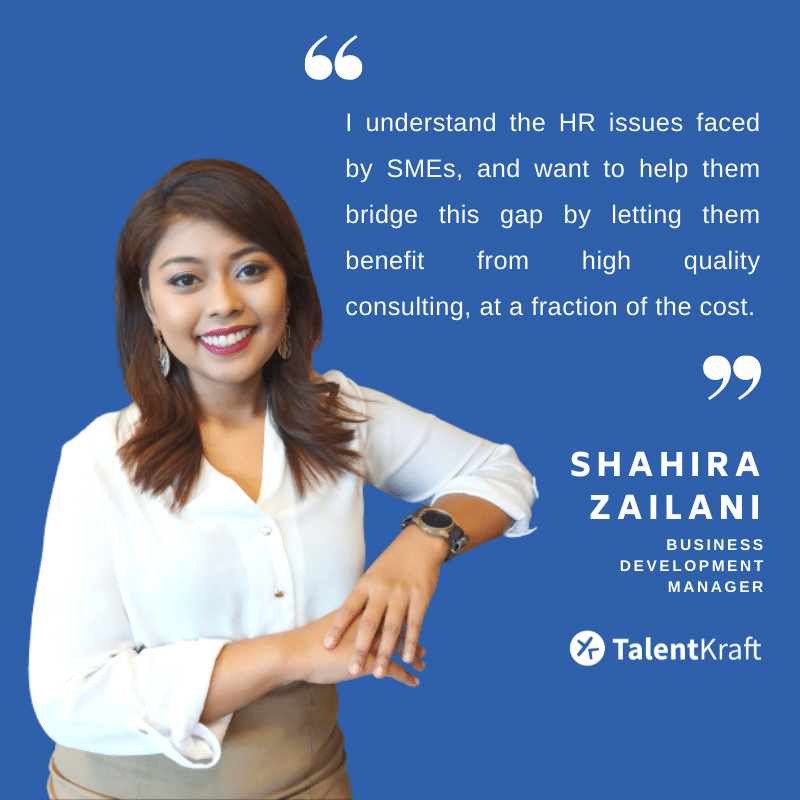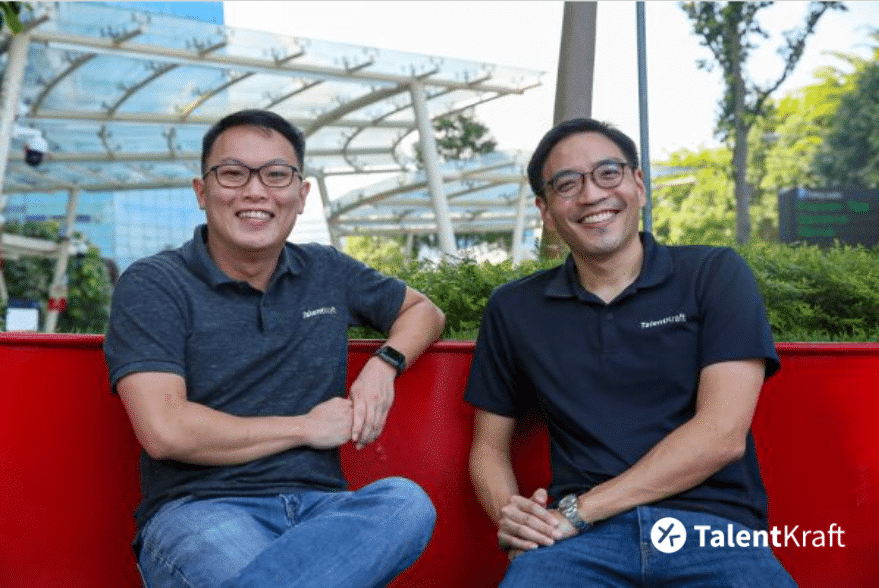Contactless Hiring:
The Future is Now
In collaboration with our partner TechBridge.

Three months ago, if someone had told you that almost all international flights would be grounded, and most of Europe would be in virtual lockdown, you would have asked that person to stop watching so many dystopian movies.
And yet, here we are in early 2020, watching front-liners battle the remnants of COVID-19 in the isolation of our home, while hoping for the global uncertainty to ease.
The ‘future of work’ that experts have long talked about is suddenly upon us – a world of remote working, video conferences and online collaboration. The global pandemic has changed how the world is working, and sourcing and hiring talent are not exempt from this change.
If you can no longer meet people, how do you interview and select the right talents?
Despite the economic dark clouds, many startups we speak to are still hiring, gearing up for growth once the world returns to normal. For companies in that position, the key question facing founders or their HR team is:
“Can we make hiring contactless without affecting the quality of hires?”
We argue that the answer is “yes”.
In fact, we believe that you can improve quality while moving to contactless hiring. Contactless hiring has many advantages over relying on the traditional, face-to-face model.
- Flexibility and scalability
Become more agile in your recruitment process as you grow.
Expand your talent pool
Assess a wider pool of applicants since you no longer solely rely on a CV to decide who you interview.- Trackable and traceable performance
Collect data on your employee from day one and track their performance overtime.
- Reduce bias
Reduce implicit bias that might suppress workforce diversity.
Flexibility and scalability
Expand your talent pool
Trackable and traceable performance
Reduce bias
Become more agile in your recruitment process as you grow
Assess a wider pool of applicants since you no longer solely rely on a CV to decide who you interview.
Collect data on your employee from day one and track their performance overtime
Reduce implicit bias that might suppress workforce diversity
Many companies know that interviews are not perfect, but inertia kept them trapped in the traditional way of doing things. The current crisis disrupts traditional hiring processes and serves as the catalyst to update the old model of meet and greet, and supplement it with analytics and technology, whilst keeping your vision clear, and central.
In general, we observe that there are three main ‘touchpoints’ in most companies hiring processes:
We will now have a look at how technologies enable you to remove each of these touchpoints and create a fully contactless hiring process.
INTERVIEWING

For most small companies, the interview remains the cornerstone of their recruiting and selection process. In fact, some hiring managers still believe that they need to look into a candidate’s eyes in order to discern their innermost being. Even if you believe that — and increasingly, people do not — there are ways to supplement human intuition with analytics and data to improve hiring outcomes.
Introduce pre-interview screening tools

One way to improve outcomes is to add in pre-screening tests before the interviews.
These can include:
- Skills tests — including coding, knowledge assessments and excel.
- Personality and psychometric tests — to assess working styles and attitude.
- Cultural assessments — to determine potential fit with the team.
- Scenario-based testing — for finance roles, strategy roles, and more.
Now, no individual test is a magic mirror that will unfailingly help you find the fairest candidate of them all. But in combination, they can significantly improve the odds that the wrong candidates are screened out before the interview stage. This not only improves hiring outcomes, but saves precious interviewer time as well— something that hiring managers will no doubt appreciate!
The next step is to improve interview outcomes even though they are being moved on to video conference or even voice call. Yes, you lose out on some visual body language cues, and yes, you may suffer technical glitches which affect candidate performance. But these are not insurmountable problems. What is more important is to standardize the interview process and to upskill the interviewers.
Standardize your interview process

Many companies we have worked with, particularly startups, have a fairly loose interview process, driven primarily by the experience and preferences of each interviewer. One way to improve outcomes is to standardize the process. Agree in advance what we are looking for in the candidate, how it will be tested, how it will be assessed, and how we will make decisions on whether or not to move the candidate forward. Standardized scorecards are now commonly available through most Applicant Tracking Systems, but are not used often enough.
Upskill your interviewers

The second lever is to upskill the interviewers themselves. In too many companies, people are assigned to interview just because they are deemed senior enough, with no prior training or even a proper briefing on what they are supposed to do. Training your interviewers in proper interview technique will greatly reduce the probability of hiring errors. It will often also lead to time savings, as interviews can be shorter, with greater focus on the things that really matter.
Another key benefit of interviewer training is that it improves candidate experience, which is becoming increasingly important to a company’s ability to hire top talent. Bad interview experiences can result in negative perception of the company. Even something as simple as opening your laptop to take notes can be interpreted as a lack of interest, since they cannot see what the interviewer is doing. Training interviewers on proper etiquette can pay great dividends down the road — and online interviews are no different.
CONTRACTING

With your new and improved contactless interviewing process in place, you’ve finally found the perfect candidate. Now it’s time to make that all important offer and organise welcome drinks!
If only it was that easy…
Finding the ideal candidate is a great feeling, but the candidate needs to actually accept your offer. This used to be a manual and tedious process involving repeated trips to the office to haggle over, and hopefully sign, stacks of documents. To operate a contactless hiring model, you need an easy and efficient process to finalise a hire.
Contactless hiring models can make it easier to make an offer, issue a contract, and respond to queries, by leveraging technology such as document templates, online collaboration tools, and e-document signing.
Standardised contract templates
Accelerate the process of getting candidates to ‘sign on the dotted line’ following their verbal acceptance with the use of standardized contract templates. For a contract to be legally binding, a page detailing start date, name, job title and remuneration must be signed. Ensuring this is ready to go at a second’s notice will naturally lead to fewer candidates verbally accepting a role, but not signing where it matters. Nothing hurts more than losing a great candidate due to an administrative delay!
Online collaboration tools
What if the candidate has questions, or wants to propose edits to the contracts? Online collaboration tools make it possible to negotiate and fine-tune a contract in real-time. No more sending marked-up attachments back and forth by email, or having to print out PDF documents so you can highlight changes. Using a platform like Google documents means both parties can comment, propose changes, and suggest edits at the same time, reducing friction and saving time.
E-document signing
E-Documents and virtual signing of contracts using a finger, e-signature or stylus does what recruiters have been overpaid to do for decades, namely, finalise! Every second counts, and rather than waste time and money sending documents by courier or arranging yet another visit to the office, contracts can be signed with a swipe on a touchpad and delivered with the click of a mouse. This is another win for contactless hiring provides over traditional methods, since it is often cheaper and faster to sign online.
Standardised contract templates
Accelerate the process of getting candidates to ‘sign on the dotted line’ following their verbal acceptance with the use of standardized contract templates. For a contract to be legally binding, a page detailing start date, name, job title and remuneration must be signed. Ensuring this is ready to go at a second’s notice will naturally lead to fewer candidates verbally accepting a role, but not signing where it matters. Nothing hurts more than losing a great candidate due to an administrative delay!
Online collaboration tools
What if the candidate has questions, or wants to propose edits to the contracts? Online collaboration tools make it possible to negotiate and fine-tune a contract in real-time. No more sending marked-up attachments back and forth by email, or having to print out PDF documents so you can highlight changes. Using a platform like Google documents means both parties can comment, propose changes, and suggest edits at the same time, reducing friction and saving time.
E-document signing
E-Documents and virtual signing of contracts using a finger, e-signature or stylus does what recruiters have been overpaid to do for decades, namely, finalise! Every second counts, and rather than waste time and money sending documents by courier or arranging yet another visit to the office, contracts can be signed with a swipe on a touchpad and delivered with the click of a mouse. This is another win for contactless hiring provides over traditional methods, since it is often cheaper and faster to sign online.
Most importantly, the collective purpose of these tools and platforms is to minimise administrative lag time when finalising a candidate. Having a standardised contract, making minor tweaks through collaborative tools and sealing the deal with fuss-free e-document signing would enhance the contracting experience for both the company and the new hire.
ONBOARDING

The ultimate goal of talent acquisition is to add new stars to your team and help the company grow. For that to happen, they will need proper onboarding to the company. This includes introduction to the company’s culture, way of working, operating protocols and other miscellaneous procedures. This typically happens after day one, when they turn up in the office all fresh-faced and eager, and are given a tour of the facilities and endless (arguably boring) briefings about filing expenses, leave policy, and so on. The bottomline is that this elongated process requires significant manpower across multiple departments to pull off.
Contactless hiring can improve the onboarding experience in several ways:
Clear administrative tasks before day one
With online submission of documents—i.e. identity documents, bank details—prior to starting work, administrative follow-up on their first day is eased.
Online learning management systems
Online management systems relay essential information about the company, and various past and present projects to new employees so that they know what to expect when they begin their first day.
Shared collaborative work online
This includes the use of Google Drive or similar tools to share important company documents with them. They can then refer to these documents for past work and critical information for their upcoming projects.
Platforms for daily kick-offs and daily wrap-ups
Online platforms such as Microsoft Teams or Zoom allow companies to start and end their work days with meetings and updates online. This is an important integrative step to introduce new hires to the company culture, past and present projects, and team dynamics.
Clear administrative tasks before day one
With online submission of documents—i.e. identity documents, bank details—prior to starting work, administrative follow-up on their first day is eased.
Online learning management systems
Online management systems relay essential information about the company, and various past and present projects to new employees so that they know what to expect when they begin their first day.
Shared collaborative work online
This includes the use of Google Drive or similar tools to share important company documents with them. They can then refer to these documents for past work and critical information for their upcoming projects.
Platforms for daily kick-offs and daily wrap-ups
Online platforms such as Microsoft Teams or Zoom allow companies to start and end their work days with meetings and updates online. This is an important integrative step to introduce new hires to the company culture, past and present projects, and team dynamics.
The challenge with contactless onboarding is not so much the delivery platform, but having the necessary content in place. For example, in many companies, most of the knowledge lies in people’s heads, and is not properly codified or captured. This makes it difficult to share the knowledge with new people on electronic platforms. While it will seem painful initially, creating a comprehensive set of training materials is a worthwhile investment in time. And even if we go back to physical onboarding, having an electronic company handbook that you can provide to new joiners should help them get off to the best possible start.
This is particularly important if you increase your use of freelancers and part-timers, as the cost of manual onboarding can escalate rapidly. Similarly, if you start to build remote or offshore teams, then the ability to easily get people up to speed becomes a critical success factor for growth.
Policies, processes and rules are perhaps not even the most challenging part of onboarding. Many companies we have spoken to do not have documents that capture the culture of the company. While “company culture” can be a fuzzy term, a few components are important for onboarding.These can include how people do collaborative work at your company, expected participation during work hours or weekend work, and behaviours that are frowned upon in the company.
While your team might already be familiar with the culture of the company, new joiners would most likely have their own expectations. To ensure they are inducted in the most efficient way possible, it is crucial that the company’s expectations align with theirs. Convey the essence of your company’s culture and expectations to new joiners as early as possible to give them time to adjust to your company settings. Making them feel like their inputs are valued by the team at the get-go boosts their motivation and encourages them to maximise contributions to your company, and hence, maximise your company’s growth. Setting up buddy or mentor pairings, who can guide them via video conference, will also help to transfer culture from existing employees to new starters. This will help ease their transition to a full and productive team member within the shortest possible time.
And finally, remember that even though everything is becoming contactless, your new hires still exist in the same physical world. So make them feel welcomed by sending them a box of cupcakes, some delivery vouchers or perhaps a nice bottle of wine!
Disrupting the traditional hiring process is not going to be easy but we hope this overview has given you some ideas and tips on how to make your own processes contactless. We can either view working from home as a roadblock to hiring elite candidates, or a huge opportunity to discover and seize the vast benefits contactless hiring can bring.
Take this chance to implement contactless hiring. In all likelihood, you will be convinced that it is more effective and efficient than in-person interviews, and decide to continue to recruit contactlessly even after the pandemic ends.
Want to make your hiring process contactless?
Get in touch with us now !
Like this article?
Want to get insights on your team's culture?
Click on this button to find out how you can do that with TalentKraft’s TeamSight.


Discovering ourselves as Gen Zs
Discovering ourselves as Gen Zs, we face unique challenges in aligning our careers with our passions. TalentKraft’s internship provided invaluable experiences, helping us define problems, explore options, and evaluate career paths. Through workshops, personality profiling, and real-world projects, we gained insights into various industries and honed our problem-solving skills. This journey has been crucial in shaping our professional growth and career decisions.

Top 3 HR challenges faced by non-profits and how to tackle them
According to LinkedIn, firms with poor employer brands could be paying as much as US$7.6 million. What exactly is an employer brand and what does it entail? And how can you improve your employer brand today to appeal to top talents?

5 ways to improve your employer brand
According to LinkedIn, firms with poor employer brands could be paying as much as US$7.6 million. What exactly is an employer brand and what does it entail? And how can you improve your employer brand today to appeal to top talents?

Talent spotlight: Meet Siao Ping Luo, HR expert & Consultant with growth mindset
With over 20 years of hands-on experience in the HR space, Siao Ping has become a leader in the Human Resources (HR) field and a consultant on people-related topics across diverse industries in the APAC region.

Talent spotlight: Our BD manager’s journey with HR
With 14 years of experience leading teams, our new Business Development Manager is no stranger to the intricacies and challenges of HR. Shahira Zailani shares her thoughts on helping companies build more effective teams!

TalentKraft helps SMEs and businesses unlock value in HR – THE BUSINESS TIMES
Part of the strategy consultant’s challenge is educating SME leaders on the importance and value of HR to their wellbeing.

